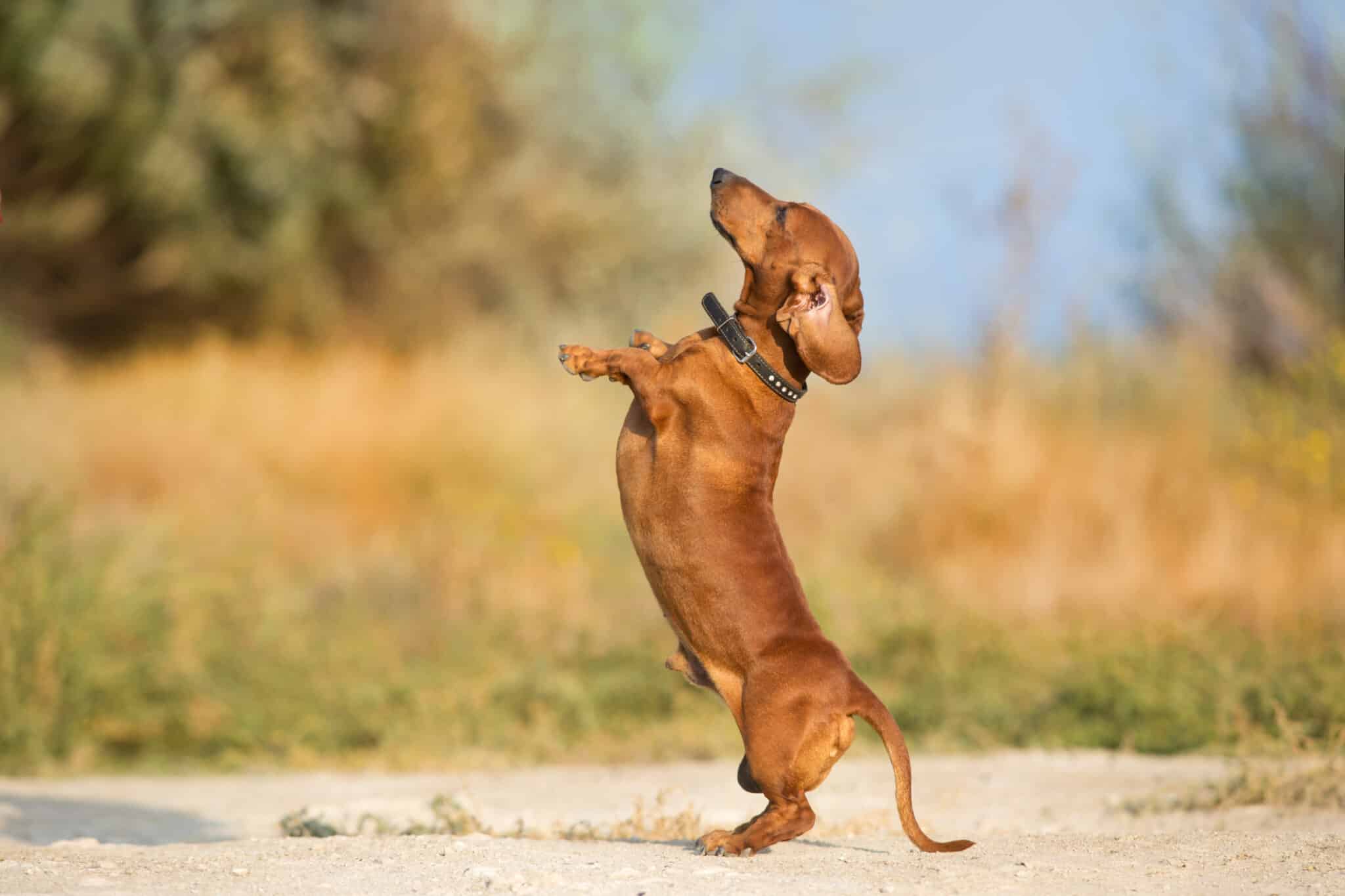
Home » The Best Kept Secret in Training Your Dog for the Show Ring

I was recently asked, “Is there some trick I can use to get my dog to stand still in the show ring?” The answer was staring her in the face. She uttered the right answer and didn’t even know it.
And now, I’ll share this with you: All of these lessons are tricks!
Every dog owner shows their puppy how to perform a trick in some form. The youngest of puppies begin by learning to learn. A good breeder will start the litter at a young age to do something, including going outside to potty. A trick. Teaching a puppy to ring a bell at the door to go outside is also a trick.
If you show your puppy how to jump over a stick or slide down a kiddie slide, you have taught it a trick. Have you taught it how to run through your legs or give a “high five? Who hasn’t? Maybe you have even taught your dog to keep a biscuit on its nose until you release it. All of these are tricks that a puppy incrementally learns to puzzle out.
So, the burning question is: “How can I use this to my advantage in the ring?” The simple answer is that everything is a trick. Important tricks for the ring include the four essential aspects of presentation: the stand for exam, showing the mouth, moving properly on a lead, and, of course, the enviable perfect free-stack!
Owner handlers, from brand new to experienced, want to know how to get their dogs to do a free-stack for the judge. I’m not a tricks instructor (or a tricks competitor) but I do enjoy teaching my own dogs tricks. What I am absolutely clear about is that this process rewards incremental change, which makes it powerful as well as useful.
Owner handlers, from brand new to experienced, want to know how to get their dogs to do a free-stack for the judge.
One more use of a trick is to teach the dog to look at the judge. Even if the judge doesn’t expect the dog to look at him or her, it’s useful for making sure the judge sees your dog’s eyes and expression. It shows the judge that the dog is confident enough to look at them, and it shows off the front if that is your dog’s strongest virtue. If your dog’s outline isn’t his virtue, it diminishes the impact by making it secondary.
When the exhibitor doesn’t actually train the dog to stand for exam, but simply feeds the dog while the judge is going over it, the dog only learns to eat on exam and often lunges for the bait. It does not learn to stand for exam and keep its feet in place. I teach the dogs to stand using the bait only to gain the dog’s attention, and ultimately, as a reward.
The more the handler feeds the dog on the exam, the harder it is to teach the dog how to stand on its own like a special. A special should stand completely still, legs in place, head forward, and alert. For the judge, the dog being fed moves back and forth so that the judge can find it difficult to ascertain the structure of the neck, shoulders, back, and musculature. If you have a dog that is beautifully built, you want the judge to be able to feel that!
Sometimes the exhibitor wants to complicate the judge’s ability to assess the dog accurately, which may include temperament. A dog that is overly fed on the exam may be a dog that isn’t trustworthy. Whether present or not, suppose the judge interprets the feeding of a dog on the exam (while the dog’s eyes are rolling back in his head) as possible mal intent. In that case, if the judge feels uncomfortable, s/he may point to another dog that is just as competitive in type but deemed more reliable in temperament. This is what it’s all about: giving the judge all the information s/he needs to effectively judge your dog.
Many judges pride themselves on finding their winners upon first impression when the dogs come into the ring. That may be so, but I believe your dog can overcome a poor first impression if the Individual (the individual exam and movement portion) of your total ring time is stellar.
On the other hand, your dog can’t overcome a flawed Individual. It’s just too important to the judge’s decision-making process. It’s those moments that count the most for many judges. Of course, we (judges) always try to look through poor presentation, and many of the better judges can see through amateurish handling. We are charged with a full assessment of the dogs, not just the first moment. You’ve paid for the time, so don’t waste it! It’s why you made the trip, and it’s what will get your dog the win. The Individual will jettison you to meet, reach, or exceed your goals.
Training the dog is probably the most important thing you can do to improve your win rate. That training is often different on the free-stack than the stand for exam. How you place the legs on the exam will determine precisely what the judge feels. Notice how your dog’s front feels when you place the legs/elbows closer or farther from the body. As a judge, I notice if the dog moves its feet, where they are when they are stacked by the handler versus when they self-stack, and which looks more comfortable for them. On a Bedlington, is it the handler who has taught the dog to stand base close, or does the dog naturally stand that way?
At times, teaching dogs bad habits will obscure their less advantageous qualities. I have noticed that handlers can take the judge’s attention away from the weakest part of the dog. A couple of tricks that I’ve seen are to talk to the judge about a favorite restaurant or about their shoes, so they look down instead of at the dog. Sometimes the handler will wave their arms or put their body in the way. For example, when I walk up to a dog for the exam, if the handler puts their head, hand, or body directly in the line of sight of the front of the dog, I look to see what they are hiding. There are many tricks of the trade that are useful for diminishing your dog’s faults. These are simple examples.
There are many tricks of the trade that are useful for diminishing your dog’s faults.
In these pages, we have discussed the choreography of the dog and handler. Where and how does that choreography occur? Behind the curtain, there is a magic, and we use magic to teach tricks.
I recently judged in Alaska, where a couple who were locals of Inuit background shared one of their historical beliefs. It is said that the Northern Lights dance when the Intuits sing and whistle. This is the responsiveness that you and your dog must have to each other when you train using incremental change. That is the level of magic that your tricks must embody.
At the beginning of this discussion, the focus was on “tricks training” for your dogs to enhance your presentation. Now we have come full circle to understand that the word “tricks” has several meanings, including a process of magic between handler and dog—the handler as well as the dog and the judge. This is why the Dog Show Mentor Blue Ribbon BluePrint is essential to anyone showing dogs. It properly brings the focus to The Dog, The Judge, and YOU! There is a triad that brings the three together to create an outcome: The Magic that the dog and handler creates brings the judge into the circle. It’s within that circle that the wins will occur.
